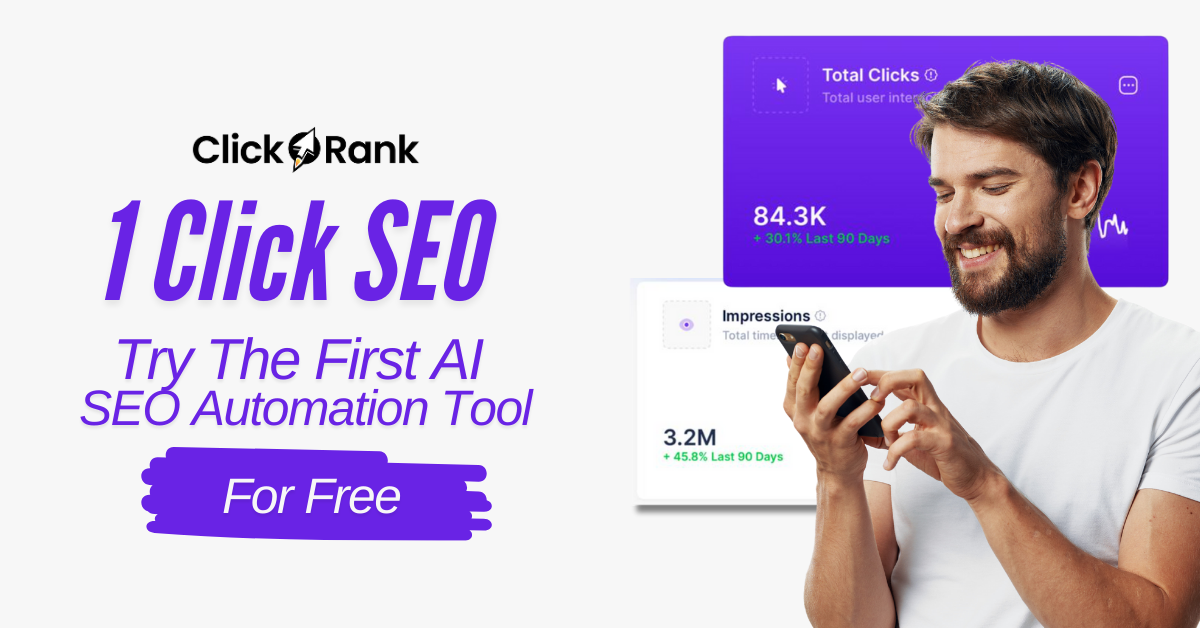Let me tell you a secret: the first time I blogged for a preschool, I had no idea what parents actually wanted to know—so I asked my neighbor Anna, a new mom. She wasn’t searching for corporate jargon; she was Googling things like ‘How much is daycare in LA anyway?’ or ‘What does my toddler do all day?’ Despite flashy AI tools and advice to chase trends, it’s still the honest, local answers that get you found online in 2025. Parents crave trust and transparency—and Google rewards helpful, human content, not just keyword stuffing. Let’s dig into what’s really on parents’ minds (and search bars) and how you can turn those questions into enrollments.
Beyond the Algorithm: Why Blogging Still Brings Families to Your Door (in 2025)
Let’s be honest—AI summaries and endless lists of “top 10” daycares haven’t replaced the power of genuine, local content. If you’re running a daycare or preschool in Los Angeles or the San Fernando Valley, you already know: parents aren’t just Googling your center’s name. They’re searching for answers to real, sometimes anxious questions. And that’s exactly where smart blogging gives you an edge in daycare SEO and childcare center visibility.
Google’s 2025 search updates still reward helpful, well-structured, and above all, local content. Forget generic info. What works now is content that’s specific to your neighborhood, your philosophy, and your families’ concerns. Research shows that when you answer the questions parents are actually typing into Google, you build what marketers call “discovery traffic”—those new families who never knew you existed, but click because you’re the one with the answers.
Here’s a real-world example: A preschool in Van Nuys started blogging about FAQs like “How safe is your preschool?” and “What’s included in tuition?” Within months, they saw a 30% increase in tour bookings. That’s not a fluke. It’s the result of meeting parents where they are—online, searching for reassurance and transparency.
But let’s talk about attention spans. Most parents are browsing on their phones, often after 7pm, in between bedtime routines and dishes. That means your blog posts need to be skimmable, mobile-friendly, and packed with value right up front. Short paragraphs. Clear subheadings. Bullet points. These aren’t just on-page SEO best practices—they’re how you actually get read in 2025.
“Parents don’t just want information—they want authentic answers from people who actually care.”
– Lisa Ramos, childcare marketing consultant
AI overviews might summarize the basics, but they can’t replace your local expertise or your voice. When you write about your own safety policies, tuition breakdowns, or daily routines, you’re not just filling a content calendar—you’re building trust. And trust is what gets families through your door.
Discovery traffic is the lifeblood of growing childcare centers. These are the parents who find you because you answered their question about “daycare cost in Los Angeles” or explained your illness policy in plain English. Local daycare SEO is about showing up for those searches, not just ranking for your center’s name.
Here’s what works:
- Blog posts that target your neighborhood or city (think “Preschool in Sherman Oaks: What Parents Need to Know”)
- Answering real parent questions—especially those you hear on tours or phone calls
- Making every post easy to read on a phone, with bold headings and quick takeaways
Remember, even one well-written blog a month—focused on what parents are actually searching for—can dramatically increase your visibility online. That’s not just good for SEO; it’s good for your community, too.

What Parents Actually Google: Hot Topic Clusters for Blog Inspiration
Let’s be honest—parents in Los Angeles aren’t Googling “cutest daycare logo ideas” at midnight. They’re searching for real answers to real questions: How much will this cost? Will my child be safe? What will they actually learn here? In 2025, blogging is still one of the best ways to show up for those searches and build trust with families who are just starting their childcare journey. Even with AI overviews and TikTok attention spans, Google rewards local, helpful content—especially when it’s written by real people who understand what parents care about.
Here’s how you can turn actual parent search behavior into blog topics that work for your daycare or preschool. Organizing your ideas into keyword clusters not only helps you batch content (hello, time saver!) but also builds up your authority in the eyes of both Google and parents. Research shows that location-based keywords and transparent blog subjects attract more discovery searches, so let’s dive into the clusters that matter most:
Tuition & Cost Transparency
- How Much Does Daycare Cost in Los Angeles (2025 Edition)?
Parents want numbers, not vague promises. Break down LA-specific daycare costs, explain your fee structure, and offer tips for affordability. Remember, “daycare cost Los Angeles” outperforms national keywords in local searches. - Daycare Tuition: What’s Included (and What’s Not)
Be upfront about what families are paying for. Is lunch included? Are there extra fees for late pickup or enrichment programs? This is preschool tuition transparency in action. - 5 Ways to Save on Preschool Without Compromising Quality
Share hacks for working parents—scholarships, sibling discounts, flexible schedules. These posts get bookmarked and shared, especially during enrollment season when daycare cost searches spike.
Curriculum & Child Development
- Montessori vs. Play-Based: What’s Right for Your Child?
Demystify the buzzwords. Parents want to know the difference, and they appreciate when you quote teachers or share real classroom stories. “Child development milestones” and “preschool curriculum” are key phrases to weave in. - What Should Toddlers Be Learning at 2 or 3 Years Old?
Break down milestones in simple language. Use examples from your own program to make it relatable. - Inside Our Daily Preschool Schedule (With Sample Activities)
Give a peek behind the curtain. Parents love seeing what a typical day looks like—bonus points for photos of real staff and kids (with permission, of course).
Safety & Trust Signals
- How We Keep Your Child Safe: Our Security & Check-In Policies
Pull back the curtain on your procedures. Parents want details, not just buzzwords. “Daycare safety policies” and “preschool security” are must-use keywords. - Teacher Credentials Matter: What Parents Should Look For
Highlight your staff’s experience and certifications. According to daycare blogs, posts about staff credentials get shared twice as much as curriculum posts. As Jessica Tran, an LA parent, put it:“The teacher qualifications were what tipped the scales for us choosing a center.”
- Illness Policies & Cleaning Protocols Every Parent Should Know
Transparency here builds trust. Parents want to know how you handle sick days, outbreaks, and daily cleaning.
And don’t forget the wild card: share a funny Google auto-complete moment or a real parent’s search journey. It’s relatable, and it reminds readers that you get what they’re going through.
Batching your blog content around these clusters doesn’t just help with keyword research for daycare—it also makes your center look organized, trustworthy, and in tune with what families actually need.

Easy On-Page SEO Wins: Make Blogs (Actually) Show Up in Search
Let’s be honest—blogging for your daycare or preschool in 2025 isn’t about tricking Google’s algorithm. It’s about answering real questions parents are Googling, in a way that feels human and trustworthy. Even with AI overviews and shrinking attention spans, Google still rewards content that’s helpful, local, and well-structured. If you want your daycare website traffic to grow, you need to focus on on-page SEO best practices that put parents first (not robots).
Use H2 Subheadings for Real Parent Questions
Think about the questions you hear during tours or phone calls. Those are gold. Turn them into H2 subheadings—like “How much does daycare cost in Los Angeles?” or “What safety policies do you follow?” Not only does this make your blog easier to scan, but it also signals to Google (and parents) that you have the answers they’re searching for. Structure your answers simply, using clear language and short paragraphs.
Include a Brief FAQ (and Use Real Questions!)
Research shows FAQ sections are three times more likely to get pulled into Google’s AI Overviews and voice search results. Use questions you actually hear from parents—don’t make them up. For example:
- What’s included in your tuition?
- How do you handle illness outbreaks?
- Can I visit my child during the day?
Keep answers concise. This not only boosts your on-page SEO, but also builds trust—parents feel seen and understood.
Link to Relevant Website Pages (Especially Tuition & Enrollment)
Internal linking is one of the easiest on-page SEO best practices. If you mention “daycare cost,” link to your tuition page. Writing about curriculum? Link to your daily schedule or enrollment info. This helps Google understand your site’s structure and keeps parents moving through your site—right to your contact form.
Show Trust Signals on Every Post
Parents are far more likely to book a tour if they see staff photos, reviews, and certifications attached to your blog posts. Don’t hide these on an “About” page—embed them everywhere. As one San Fernando Valley father put it:
“A clear, friendly FAQ section and real staff photos made us feel like we already knew the team before visiting.” – Michael Cortez, San Fernando Valley father
This is building trust childcare marketing at its best. Testimonials and real images make your center feel approachable and safe.
Prioritize Fast-Loading, Mobile-Optimized Layouts
Here’s the reality: 55% of daycare website traffic is now mobile, up from just 38% in 2022. Most parents are scrolling during work breaks or late at night. If your blog loads slowly or looks awkward on a phone, you’ll lose them before they read a word. Mobile optimization for daycare sites isn’t optional anymore—it’s essential for both SEO and conversion rates.
Cluster Content & Link Related Posts
Don’t let your blogs float alone. Link related posts together—like a safety article linking to your illness protocol post. This not only helps parents find more answers, but also signals to Google that you’re an authority on key topics. Over time, this approach builds topical authority and keeps your daycare website traffic growing steadily.

Conclusion: Batch (Don’t Burn Out)—And See the Snowball Effect
Let’s be honest: running a childcare center is already a full-time job (and then some). The idea of keeping up with a weekly blog? For most directors and owners, that’s a recipe for burnout—not success. But here’s the good news: you don’t have to blog every week to see real results. In fact, research shows that batching your content around focused clusters—like tuition transparency, curriculum, or safety—can actually boost your authority and visibility far more than random, scattered posts ever could.
Think of it this way: Google isn’t looking for the loudest voice, but the most helpful one. When you group your blog posts by what parents are actually searching for—like “daycare cost Los Angeles,” “Montessori vs. play-based,” or “preschool safety policies”—you’re sending a clear signal that you’re an expert in early childhood education. This is the heart of modern childcare marketing strategies: show up where parents need you, answer their real questions, and let your expertise shine through.
And don’t get stuck on perfection. Parents aren’t looking for polished marketing speak—they want real stories, honest answers, and a peek behind the curtain. Snap a quick photo of your staff prepping for circle time, share a candid moment from your playground, or introduce a teacher with a short bio. These little touches build trust and make your center feel approachable. As Priya Patel, a preschool director in Encino, puts it:
“Even publishing a single helpful post each month has kept our inbox full with tour requests.”
That’s not just a feel-good anecdote. One LA childcare center saw a 40% increase in website inquiries after they started targeting the three main content clusters parents care about most. It’s less about frequency and more about staying consistent and focused. One thoughtful post a month—rooted in what real parents are Googling—can open the door to new conversations, tours, and enrollments. That’s the snowball effect: small, steady efforts that build momentum over time, increasing visibility for childcare centers without overwhelming your team.
So, if you’re feeling stuck or intimidated by technical jargon, remember: helpful answers beat perfect prose every time. Use the content ideas for early childhood education we’ve outlined, stick to the clusters that matter, and let your authentic voice do the heavy lifting. Whether you’re in Los Angeles, the San Fernando Valley, or anywhere parents are searching for trustworthy care, batching your content is the simplest way to grow your authority—and help the right families find you.
Even one blog a month, focused on what parents are actually searching for, can dramatically increase your visibility online—and help the right families find your center.
TL;DR: Blogging about what real parents actually Google—costs, curriculum, safety, and staff—connects you to families looking for honest answers and helps your center show up in searches. Even one well-placed blog a month builds trust, visibility, and new inquiries.
You may be interested

